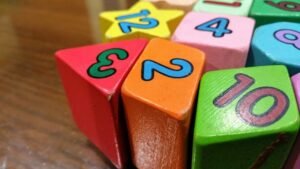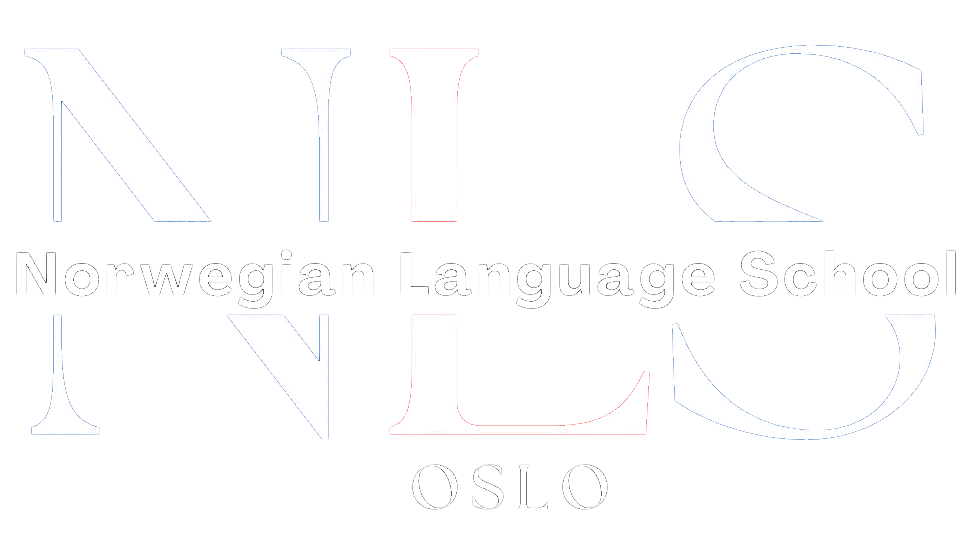Have you ever wondered how to say “head” or “arm” in Norwegian? Are you curious about Norwegian anatomy vocabulary? Look no further! In this quick guide, we will explore the vocabulary related to body parts in Norwegian. Whether you’re a beginner or looking to expand your language skills, this guide will help you navigate the essentials of Norwegian anatomy. Let’s dive in!
Table of Contents
ToggleKey Takeaways:
- Expand your language skills by learning the vocabulary for body parts in Norwegian.
- Develop the ability to describe different parts of the body in Norwegian.
- Enhance your understanding of Norwegian anatomy to discuss health and wellness topics.
- Discover specialized vocabulary for hands and feet in Norwegian.
- Practice using these words in everyday conversations to reinforce your learning.
Basic Body Parts
In this section, we will cover the basic body parts in Norwegian. By learning these essential vocabulary words, you will be able to describe different parts of the body in Norwegian. Let’s dive in and expand your language skills!
The List of Basic Body Parts in Norwegian
| English | Norwegian |
|---|---|
| Head | Hode |
| Face | Ansikt |
| Eye | Øye |
| Nose | Nese |
| Mouth | Munn |
| Ear | Øre |
| Neck | Hals |
| Shoulder | Skulder |
| Arm | Arm |
| Hand | Hånd |
| Finger | Finger |
| Chest | Bryst |
| Back | Rygg |
| Stomach | Mage |
| Leg | Ben |
| Knee | Kne |
| Ankle | Ankel |
| Foot | Fot |
| Toes | Tær |
With this comprehensive list, you now have the vocabulary to describe the most common body parts in Norwegian. Practice using these words in sentences to reinforce your learning and expand your conversational skills! Remember to explore the other sections of this guide to learn more about specific body parts and organs.
Head and Face
In this section, we will explore the vocabulary related to the head and face in Norwegian. Understanding these body parts is essential for describing facial features and engaging in conversations about personal appearance. Let’s dive into the specifics of norsk kroppsdeler and norsk anatomi ordliste for the head and face.
1. Eyes
- Eyes – Øyne
- Eyebrows – Øyenbryn
- Eyelashes – Øyenvipper
2. Nose
- Nose – Nese
- Nostrils – Nesebor
- Bridge of the nose – Neserygg
3. Mouth
- Mouth – Munn
- Lips – Lepper
- Teeth – Tenner
4. Ears
- Ears – Ører
- Earlobes – Øreflipper
- Inner ear – Øregang
5. Cheeks and Chin
- Cheeks – Kinn
- Chin – Hake
- Dimples – Dusker
6. Forehead
- Forehead – Panne
- Temples – Tinninger
7. Hair
- Hair – Hår
- Scalp – Hodebunn
- Roots – Røtter
By familiarizing yourself with these important words, you can confidently discuss the different parts of the head and face in Norwegian. Use this knowledge to engage in conversations about personal appearance, health, or even to navigate the hair salon. Keep practicing and expanding your norsk kroppsdeler vocabulary!
| Body Part | Norwegian Translation |
|---|---|
| Head | Hode |
| Face | Ansikt |
| Eyes | Øyne |
| Nose | Nese |
| Mouth | Munn |
| Ears | Ører |
| Forehead | Panne |
| Hair | Hår |
Upper Body
In this section, we will focus on the upper body and discover how to describe its various parts in Norwegian. From the shoulders (skuldre) to the chest (bryst) and the arms (armer), we will provide you with the necessary vocabulary to discuss your upper body anatomy in Norwegian. Let’s explore!
Basic Body Parts
Before delving into the specifics of the upper body, let’s review some basic body parts in Norwegian:
- Head – Hode
- Neck – Hals
- Shoulders – Skuldre
- Chest – Bryst
- Arms – Armer
- Elbows – Albuer
- Hands – Hender
Describing the Upper Body
Now that we have refreshed our memory on the basic body parts, let’s learn how to describe the different components of the upper body in Norwegian:
- Shoulders – The shoulders are called “skuldre” in Norwegian. They play an important role in supporting the weight of the arms and provide mobility to the upper body.
- Chest – In Norwegian, the chest is known as “bryst”. It houses vital organs like the heart and lungs and is responsible for protecting them.
- Arms – Armer is the Norwegian term for arms. The arms consist of the upper arm (overarm) and the lower arm (underarm), which includes the forearm and the wrist.
- Elbows – To refer to the elbows in Norwegian, you would use the word “albuer”. The elbows act as a joint connecting the upper and lower arms.
- Hands – The hands, known as “hender” in Norwegian, are incredibly versatile and play a crucial role in our daily activities.
Now that we’ve covered the basics, you have a solid foundation for discussing the upper body in Norwegian. Practice using these words to describe your anatomy and enhance your language skills!
Lower Body
Now, let’s shift our focus to the lower body. In this section, we will explore the various body parts below the waist, including the legs and feet. Enhance your vocabulary and learn how to describe these different kroppsdeler (body parts) in Norwegian related to the lower body.
Legs
One of the key components of the lower body is the legs. Take a look at the table below to learn the norsk kroppsdeler (Norwegian body parts) for the different parts of the legs:
| Norsk Kroppsdeler | English Translation |
|---|---|
| Ben | Leg |
| Lår | Thigh |
| Kne | Knee |
| Kalv | Calf |
| Fot | Foot |
| Ankel | Ankle |
Feet
In addition to the legs, understanding the norsk kroppsanatomi (Norwegian body anatomy) of the feet is important. Here are the body parts related to the feet:
- Tå
- Toe
- Forfot
- Forefoot
- Såle
- Sole
- Hæl
- Heel
- Underben
- Shin
By familiarizing yourself with these norsk kroppsdeler (Norwegian body parts) for the lower body, you’ll be able to discuss anatomy and describe various body parts confidently in Norwegian.
Organs
In this section, we’ll explore the fascinating world of organs and delve into the Norwegian vocabulary associated with them. Understanding the names of essential organs is vital when discussing health and anatomy in Norwegian.
Heart
The heart is a vital organ responsible for pumping blood throughout the body. In Norwegian, it is called “hjerte.” It plays a crucial role in maintaining overall health and well-being.
Lungs
The lungs are the organs responsible for breathing and oxygenating the blood. In Norwegian, they are called “lunger.” They allow us to take in oxygen and remove carbon dioxide.
Stomach
The stomach is an integral part of the digestive system. It helps break down food and absorb nutrients. In Norwegian, it is known as “mage.”
Liver
The liver is a large organ that detoxifies the body, produces bile, and metabolizes nutrients. In Norwegian, it is called “lever.” It plays a vital role in maintaining overall health.
Kidneys
The kidneys are responsible for filtering waste materials from the blood, maintaining fluid balance, and producing urine. In Norwegian, they are known as “nyrer.”
| Organ | Norwegian Translation |
|---|---|
| Heart | hjerte |
| Lungs | lunger |
| Stomach | mage |
| Liver | lever |
| Kidneys | nyrer |
Understanding the vocabulary related to organs in Norwegian will enable you to have more in-depth conversations about health and human anatomy. Take the time to familiarize yourself with these terms and expand your language skills.
Special Mention: Hands and Feet
Hands and feet play significant roles in our daily lives. Not only are they essential for carrying out tasks, but they also provide us with a sense of touch and balance. In this section, we’ll focus specifically on the vocabulary related to hands and feet in Norwegian, allowing you to enhance your language skills and expand your understanding of Norwegian anatomy.
Words for Hands
Let’s start by exploring the different parts of the hands in Norwegian:
| English | Norwegian |
|---|---|
| Fingers | Fingre |
| Thumb | Tommel |
| Index finger | Pekfinger |
| Middle finger | Langfinger |
| Ring finger | Ringfinger |
| Pinky | Lillefinger |
| Palm | Håndflate |
| Wrist | Håndledd |
Words for Feet
Now let’s move on to the vocabulary related to feet:
| English | Norwegian |
|---|---|
| Toes | Tær |
| Big toe | Stortå |
| Second toe | Langtå |
| Middle toe | Mellomtå |
| Fourth toe | Ringtå |
| Pinky toe | Lilletå |
| Sole | Såle |
| Ankle | Ankel |
By familiarizing yourself with these words, you’ll be able to describe and talk about hands and feet in Norwegian with greater ease. Remember to practice using this vocabulary in your conversations to reinforce your learning.
Conclusion
Congratulations! You’ve completed our quick guide on body parts in Norwegian. Throughout this guide, you’ve learned essential vocabulary to describe different parts of the body in Norwegian. By now, you should have a solid foundation in Norwegian anatomy vocabulary that will help you communicate effectively in various situations.
To reinforce your learning, we encourage you to practice using these words in everyday conversations. Incorporate them into your language studies and engage in discussions with native Norwegian speakers. The more you use these vocabulary words, the more confident you will become in expressing yourself accurately.
Remember, language learning is a journey that takes time and dedication. Be patient with yourself and enjoy the process of exploring the rich world of the Norwegian language and culture. Keep expanding your language skills, and soon you’ll be able to have in-depth conversations about anatomy and many other fascinating topics in Norwegian!








